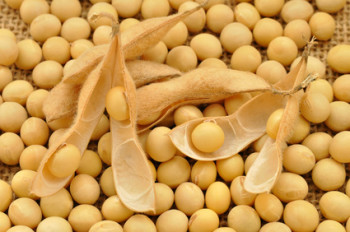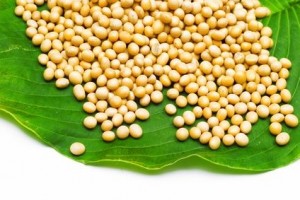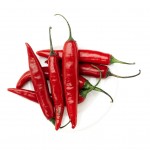By Anthoney J. Andersen – Steroidal.com
Soy lecithin is one of those universal ingredients that are found in almost every type of food.
Its primary use is that of an emulsifier – a chemical addictive that encourages the suspension of one liquid in another.
Individuals that take part in the Paleo Diet try to resist eating soy lecithin at all costs. However, even small traces of the ingredient pops up in foods like chocolate, which is one of the endowments in the diet.
The following dissects soy lecithin and allows you to view all the benefits and drawbacks of the ever-present addictive.
THE GENESIS
The term “lecithin” refers to the blend of phospholipids and oil. According to Hyperphysics.edu, phospholipids are an assortment of lipids that are responsible for the construction of cell membranes.
They are usually found in the cell membranes of both plants and animals. However, lecithin stems from sunflower kernels, canola, milk, soy and egg yolks.
The exact synthesis of soy lecithin tends to differ depending on the way it’s manufactured and its intended purpose.
In most cases, soy lecithin contains roughly 35 percent soybean oil and 16 percent phosphatidylcholine – a type of phospholipid that is immeasurably found in liver and egg yolks.
According to Livestrong.com, in order to make soy lecithin, soybean oil is first extracted from raw soybeans using a chemical solvent.
The crude soy oil is then sent through a process known as “degumming,” where water is interfused with the soy oil until the lecithin is hydrated and disconnects from the oil.
Before the lecithin proceeds to the “degumming” phase, the crude oil endures a multi-step process to remove the hexane.
After you consider all aspects of the “degumming” process, what you’re left with is a gooey muck leftover from the crude soy oil containing a number of solvents and pesticides, and has a density that ranges from a gummy fluid to a plastic solid.
Today lecithin is used in most processed foods as a way to keep the water and fats in certain foods like margarine, peanut butter, ice cream and coffee creamers from separating.
DON’T BE RASH
Soy allergies are becoming increasingly more prominent in the U.S. Soy allergies originate from soy proteins, so whether or not soy lecithin is responsible for an allergic reaction depends on the quantity of soy protein in the food.
Although soy allergies normally occur in infants and small children, it can surface at any age.
According to Clevelandclinic.org, soybeans are legumes and other foods in the legume family tree include peanuts, kidney beans, lima beans, string beans, pinto beans, peas and lentils.
Some people with soy allergies have a reaction after certain legumes and should consult with their doctor about what other legumes they should stay away from.
SYMPTOMS
According to WebMD, allergic reactions to foods usually happen within minutes, but can sometimes-surface hours after ingesting the food.
The severity of the allergic reaction varies by person, but can be as mild as some itching and a few hives, to more life-threatening cases that involve respiratory problems that include swelling of the throat.
The symptoms of food allergies may include the following:
- Itching
- Hives
- Eczema
- Swelling of the lips, tongue or throat
- Nausea, vomiting or diarrhea
- Dizziness
- Fainting
- Chest tightness and trouble breathing
AVERTING THE STORM
If your doctor has diagnosed you with having soy allergies, then the only sure fire way to avoid an allergic reaction is by staying clear of soy products altogether.
Avoiding soy lecithin is extremely difficult to do because it’s inside most processed food products. The Food and Drug Administration (FDA) now requires food manufacturers to list common food allergens on food labels.
Food labels must clearly list the eight most common food allergens that attribute to most allergic reactions: cow’s milk, soy, wheat, egg, peanuts, tree nuts, fish and shellfish.
It’s clear that the source of soy lecithin plays a major role in determining whether or not a person with soy allergies will experience an allergic reaction.
Researchers and physicians at MedicineNet.com say that since protein makes up such a low concentration in most foods, and soy lecithin itself accounts for no more than one percent of processed foods, it’s usually not deemed a severe problem in individuals with minor sensitivities to soy.
CONCLUSION
When you take a step back and look at the bigger spectrum of things, you’ll find that soy lecithin is an additive that is almost impossible to avoid.
Unless you disregard processed foods altogether ¾ not to mention your favorite treats – it’s best that you educate yourself on the ingredients of certain foods.
Does this food contain traces of soy lecithin? If so, how much?
Furthermore, if you think you may have food allergies related to soy products, then it’s best to consult your doctor so he or she can run some tests to pinpoint what foods are causing your symptoms.
Be proactive.








